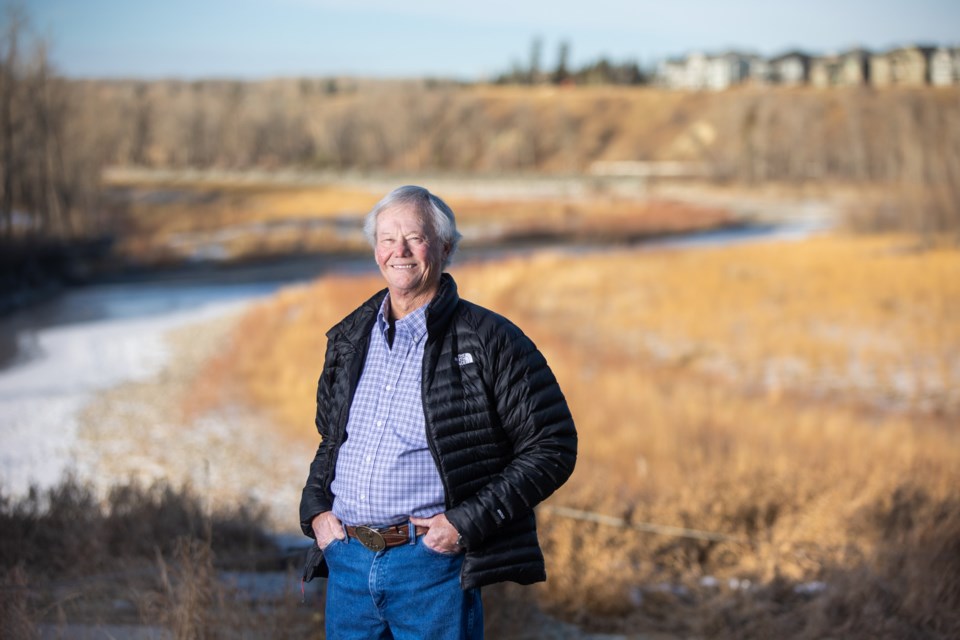A lot changed in the realm of livestock medicine through the career of a now-retired Okotoks veterinarian.
Ted Shacklady retired in December after 48 years in veterinary medicine, and said while some things remained constant, the industry saw many advancements over the nearly five decades.
“The change I’ve noticed most since 1972 is there’s more from an individual animal medicine to a herd medicine,” said Shacklady.
He said preventative medicine has become key with methods like vaccination to ward off disease rather than treating sick animals with antibiotics on a one-off basis.
It costs a little more to get the vaccination profile of the herd up-to-date, but most producers were keen to take it on, he said.
“They saw they could prevent disease rather than treating,” said Shacklady. “Producers over the years have developed their own ability to recognize conditions and to appreciate how important it is to prevent disease rather than try to treat it.”
It’s made a difference in the food chain as well, because vaccinations result in fewer withdrawal periods from drugs, meaning the substance is cleared from the animal sooner, making it safe for slaughter.
Withdrawal periods can range, with the average vaccine lasting about 21 days, and drugs between 10 to 45 days depending on the type of substance, its dosage, and whether it contains chemical ingredients. Some pour-on applications used to eliminate parasites can have a longer withdrawal period, he said.
Food safety is of prime importance to producers, and he said they’re ready to take the advice of veterinarians as far as withdrawals.
“It’s just a matter of making the producer aware of what that withdrawal is and continue updating and providing that information,” said Shacklady. “They’re very good at recognizing the importance of it, because really what we’re doing is providing food for the populace so it has to be safe.”
He said the past 10 to 15 years has also seen an increased use of pain medication in herds. Cows are often given medication for Caesarean sections or difficult deliveries, and sometimes calves are administered pain meds if they are in distress.
“They respond a lot better to it,” said Shacklady. “More and more the calves, whenever they’re castrated or de-horned, are given a pain medication so they recover that much quicker.”
The key to most advancements in livestock medicine has been the education and awareness of producers, he said. The more people are aware of pain medication and vaccines, the more likely they are to use them for their herd.
With public press and online information, he said the upcoming generations of producers are more educated and aware now than ever.
“There’s just such an amount of knowledge more available to the younger people now,” said Shacklady.
As far as technology, he said the biggest change is the more prevalent use of ultrasound diagnostics, especially in determining whether a cow is pregnant.
“It means they can do it a lot quicker, it’s a lot easier on the operator of the equipment than the old way of rectal palpitation and getting bounced around in the shoot,” said Shacklady.
Practitioners can determine pregnancy earlier in gestation as well, which means cows that were not impregnated are weeded out sooner and prepared for slaughter.
“Consequently the increasing cost of operation is reduced on a per-animal basis,” said Shacklady. “We’re doing our best to make their operations profitable, and they buy in pretty quick.”
While techniques and advances in medicine and technology may have changed over the years, some things have stayed the same, he said.
“This area is still a great place to practice, a great place to work with the agricultural community, and you become partners with them as a practitioner,” said Shacklady. “That hasn’t changed. That’s always been there, it’s just been increased somewhat now.
“It’s a team effort.”




